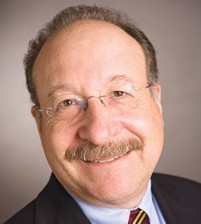Dubroff: Tri-Counties exploring solutions to housing unaffordability
IN THIS ARTICLE
- Columns Topic
- Henry Dubroff Author
By Henry Dubroff Friday, July 14th, 2017

Henry Dubroff
If you decided to hold your breath until California’s coastal counties found real solutions to the housing crisis, your odds of survival would be very long.
But just when you think there’s no hope for an end to the state’s housing nightmare, there are some early signs of a new consensus to address the problem. Whether it will actually amount to dirt moving and properties being built is another story.
But clearly some elected officials are worried — perhaps by the results of the last election, perhaps by the fact that their kids can’t afford to live anywhere close by. And there are some clever solutions being tested to make housing less unaffordable.
In Ventura County, a July 12 housing summit at California Lutheran University brought multiple parties together to talk about the future of housing. Fresh from his success in creating California’s first market for trading rights to groundwater, Center for Economic Research and Forecasting Director Matthew Fienup brought to the table several ideas for breaking the political gridlock around building and development.
One of his ideas is to use land trusts and conservation easements to trade permanent protection for some land in return for developing parcels adjacent to cities.
Another would be to create a series of transactions, much like a cap and trade system, where open space could be purchased by developers as part of a deal for developing or redeveloping urban sites.
That is perhaps the only way that large areas — the Ventura River valley or coastal hillsides — could be preserved in a way that provides some flexibility to desirable land protected under the county’s SOAR growth boundaries. The CLU working group also hopes to create a voice for stakeholders who see housing opportunities as a priority and are willing to speak up about it.
Santa Barbara is one of the worst actors when it comes to housing, importing tens of thousands of workers a day who can’t afford its sky high prices. From 6-8 p.m. on July 26, Mayor Helene Schneider will convene a public discussion on the high cost of living in the city, with panelists including attorney Trevor Large, representing the hard-hit hospitality industry; Chamber of Commerce CEO Ken Opplinger; UC Santa Barbara labor expert Nelson Lichtenstein; and housing advocacy groups. The program is free and will be held at the Faulkner Library in the downtown.
One of the concepts that will be under discussion at the Santa Barbara program is allowing for more mixed-use housing construction or reconstruction in the city’s urban core. Many experts think that having more people live downtown is an important step in beginning to pull the State Street retail corridor out of its current descent into chaos.
California’s economy is chugging along pretty well right now so it seems like a good time to break the regulatory logjams that have built up to slow housing construction and basically strangle the market with a lack of supply.
More forward thinking communities such as San Luis Obispo are making some progress in easing the rules for workforce housing and larger projects; economic good times and a commitment by Cal Poly San Luis Obispo to take care of its workforce for future generations has helped set an example.
But the incumbent property owner, whose taxes are shielded under Prop. 13, who does not want more cars or people in the neighborhood and who has feasted on the restriction of supply as a way to build an estate, is a formidable force. The politicians who unleashed the forces of nimbyism as a way to gain office are going to find it is difficult to bring those forces back into line.
• Reach Editor Henry Dubroff at [email protected].









